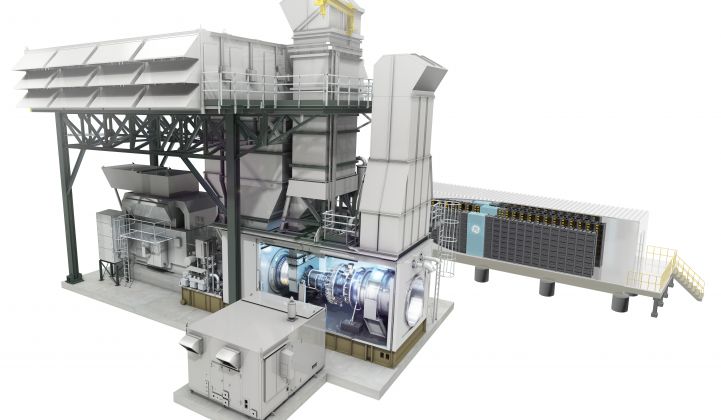General Electric’s Current is integrating a utility-scale battery storage system with an existing gas turbine for Southern California Edison to help the utility be more efficient and use less gas due to coming restrictions in the wake of the Aliso Canyon energy crisis.
The 10-megawatt battery will be integrated with an existing GE gas turbine and an upgraded control system. While batteries have been used in other hybrid systems for power production, such as in smaller generators for commercial use, this is the world’s first utility-scale application of battery storage and a gas turbine.
“As a team, we worked together to quickly provide a complete scope of the challenge and find a solution in a very short time frame,” Eric Gebhardt, chief platforms & operations officer for Current, said in a statement. “Now we can bring this same technology to other GE gas turbine customers around the world.”
It is not immediately clear what other utilities might be in the market for this type of a system. SCE is investing in 100 megawatts of battery storage or more to help deal with the possibility of electric service interruptions because of the Aliso Canyon gas storage facility shutdown.
The Aliso Canyon constraint makes the situation in Southern California unique. However, European utilities might also be interested in this type of solution in countries like Germany, where they're looking to maximize the value of existing fossil fuel generators for grid services. Battery hybrids are being used in utility-scale power production, but more commonly with wind or solar projects.
The technology will increase the efficiency of the turbines, primarily by allowing the turbines to operate in standby mode without using any fuel. By staying in standby mode, the system can also respond more quickly to grid needs, such as providing spinning reserve. The battery could also offer grid services, increasing the flexibility of the unit overall and doing it at a lower cost than the gas turbine alone.
The system is expected to be fully installed by the end of this year and operational in early 2017.
Read more on how cutting-edge grid technologies are helping Southern California handle the Aliso Canyon situation:



